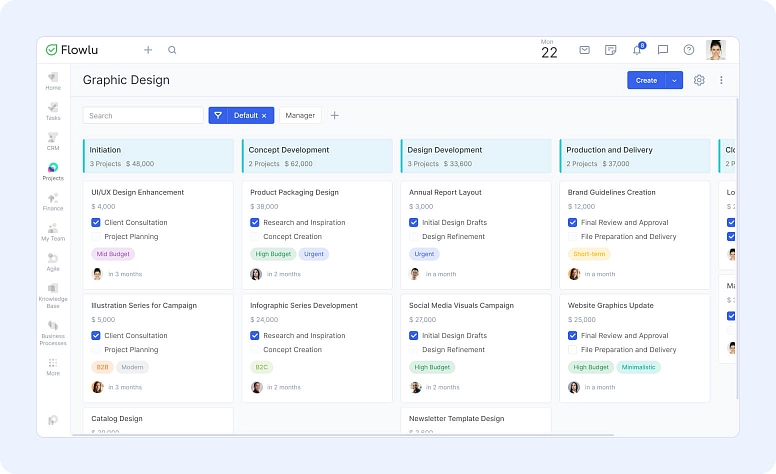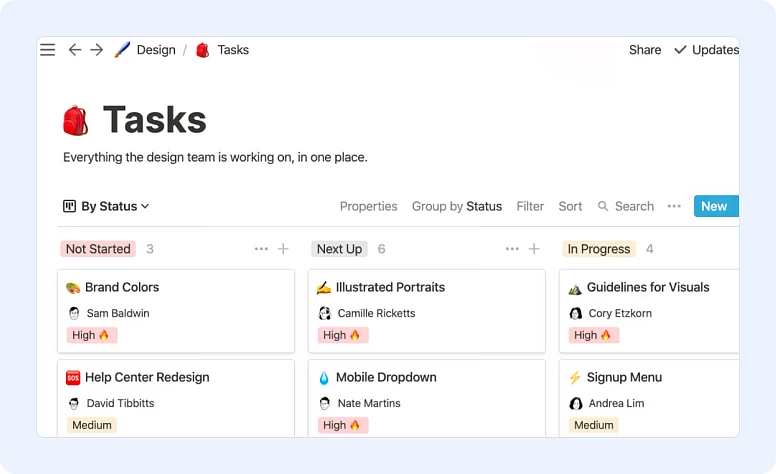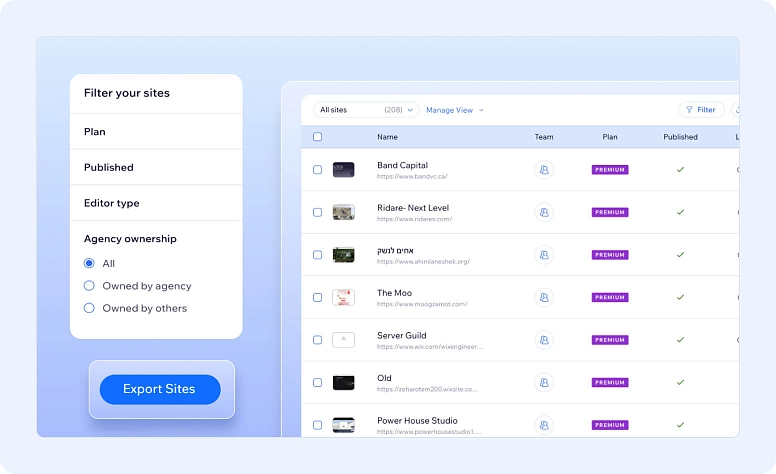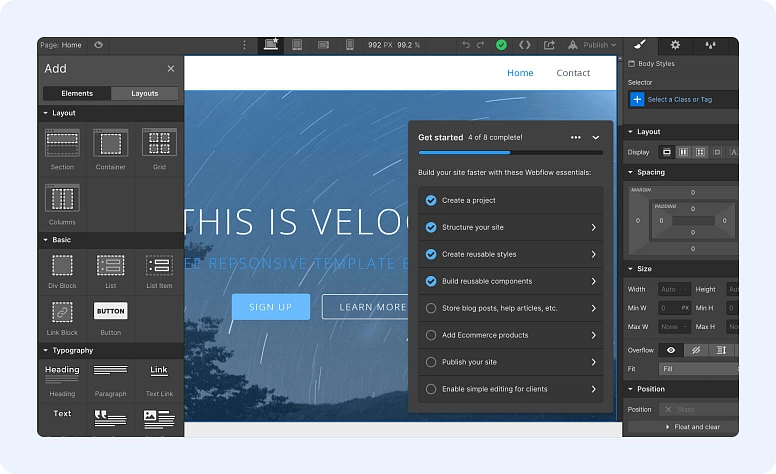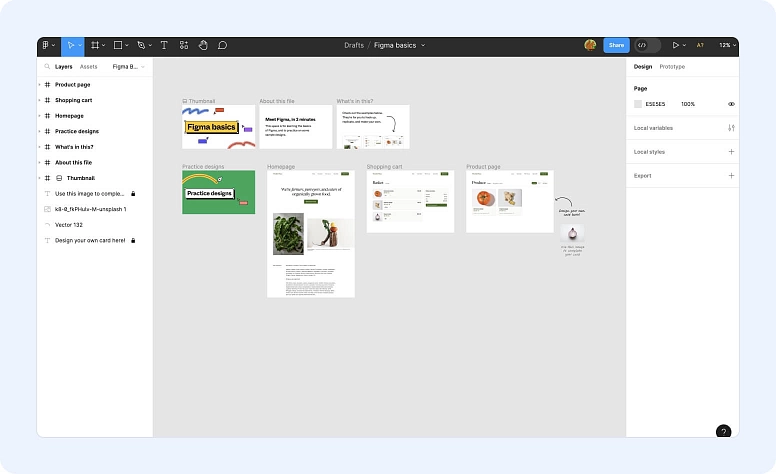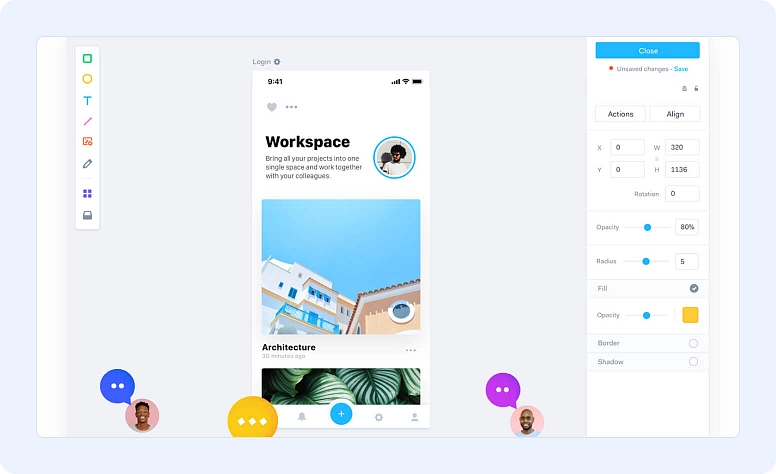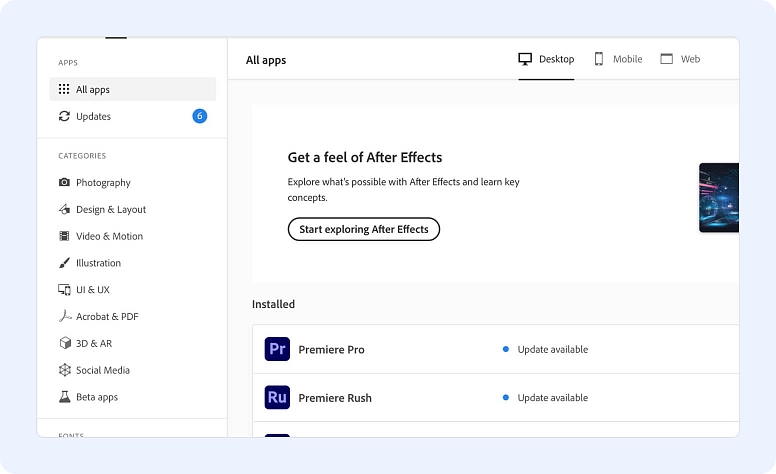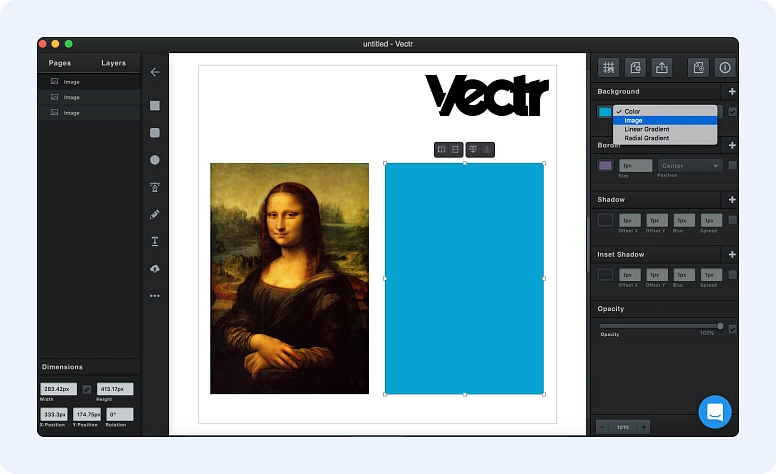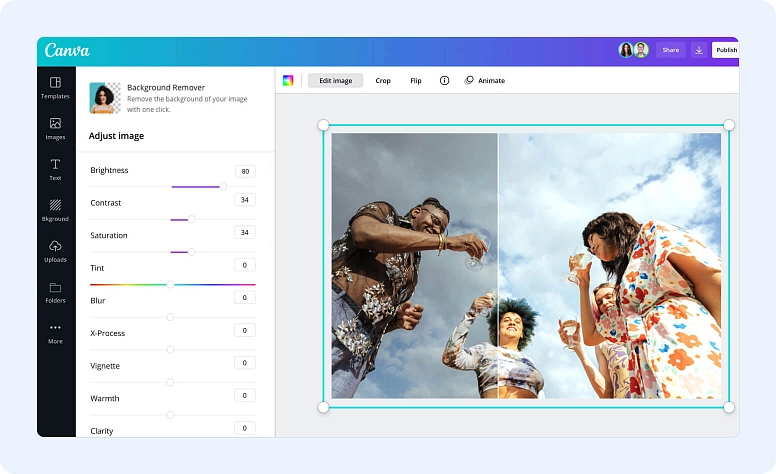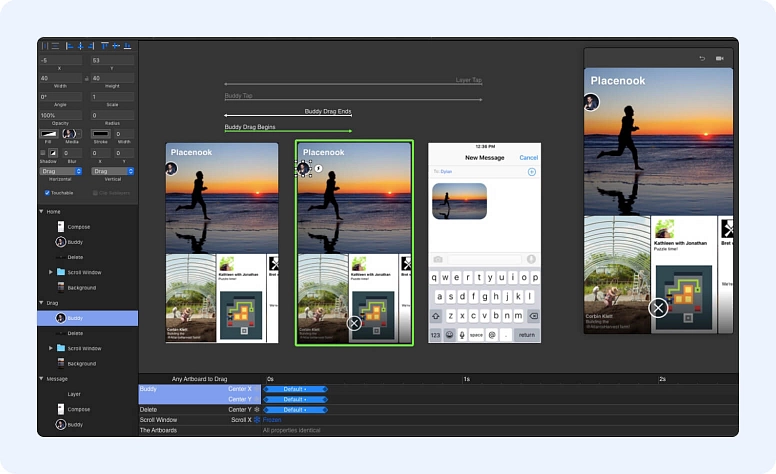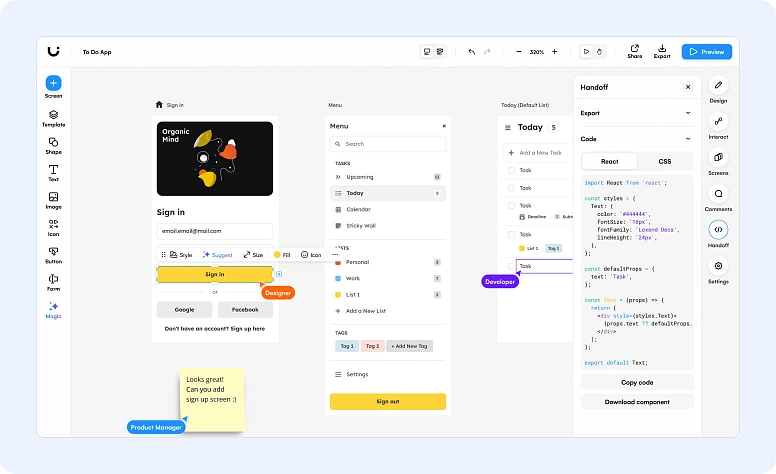The Best Tools for Graphic and Web Designers to Use in 2025
Freelance designers are part artist, part project manager, and part firefighter. You’re sketching wireframes in the morning, finessing a logo at noon, and racing to deliver final assets by nightfall.
That’s why your toolkit matters. The right tech setup can help keep that creative flow intact and allow you to stay quick, adaptable and ahead of deadlines
If you’re leading a one-person studio or managing multiple clients, you need to look for software that takes care of the background work and keeps your projects, feedback, and assets in perfect sync.
In this guide, we’ve rounded up the best tools for designers in 2025.
14 Graphic Design Software & Tools to Try
The graphic design tools are the heart of your freelance job. When you create logos, layouts, or illustrations, they are always with you. Having the correct software helps you to work quicker and with better precision. Below are some top options that designers swear by.
Business Management Tools
Before talking about the design tools, it’s important to speak a little about how to run the business itself. As a freelancer, you probably manage design requests, share files, get client feedback, follow tasks, and send invoices in many different platforms. The right tools help you reduce all the back and forth, keep your projects organized, and work faster with clients and teammates.
1. Flowlu
Flowlu is an all-in-one platform for managing your business. It puts together project management, cloud CRM, task tracking, time logging, finances, and team collaboration in one clean place.
When you work with many clients, you don’t need to use different tools like Trello, QuickBooks, or Google Sheets anymore.
It’s a great option if your freelance work is growing. You can work with contractors, manage retainers, and organize everything like a real design studio. From the same dashboard, you can follow project stages, create subtasks, chat with clients, and send invoices easily.
Highlights:
- Combine CRM, invoicing, task tracking, and project management
- Share files, track time, and collaborate in real time
- Built-in client portal for communication and feedback
- Scales from solo work to agency-style operations
2. Notion
Notion is a flexible and all-in-one workspace for designers. It helps you manage project briefs, content calendars, moodboards, asset libraries, and client wikis in one place.
It’s not made only for design, but its system with databases, pages, and templates makes it simple to build your own workflow that fits how you work.
For freelancers working alone or in small teams, Notion can replace many different tools like Google Docs, Trello, or Dropbox Paper. It works very well to organize deliverables, share progress, and keep all client information together.
Highlights:
- Highly customizable for content, task, and project management
- Great for client onboarding docs, timelines, and style guides
- Shareable pages make it easy to update clients in real time
- Templates available for proposals, briefs, and asset tracking
All-in-One Design & Web Tools
If you need flexibility and speed, the all-in-one platforms are very good because they put web design, hosting, and sometimes graphic tools all together in one place. With them, you don’t have to be jumping between many apps, and the client handoff becomes more simple and fast.
3. Wix
Wix is still very popular for designers who want to make beautiful websites fast and with easy drag and drop. It has hundreds of templates, many app integrations, and more business tools every time, like e-commerce and booking systems. Its AI editor can suggest layouts depending on your content, so you build the site faster, and it also supports AI model integration for more advanced personalization.
Wix has been improving a lot in design freedom, SEO options, and developer tools (like Wix Studio and Velo). Now freelancers can go further than the normal templates when they need more custom designs.
Highlights:
- Ideal for freelancers working with non-technical clients
- Includes built-in tools for online stores, bookings, and blogs
- Offers mobile editing, basic SEO, and site analytics
- Newer versions support developer access via Velo and advanced animations with Wix Studio
- Hosting and domain management included
4. Webflow
Webflow is one of the favorite tools for web designers who like to have more control over the layout, animations, and interactions but don’t want to write code by hand. It is built with the idea of “visual coding,” where every action you make in the design becomes real HTML, CSS, and JavaScript. This makes it perfect to create professional websites with complex functions and still work in a completely visual way.
Webflow also includes its own CMS, a content editor for clients, and full hosting service, so you can deliver the website totally managed when the project finishes. It takes a little time to learn, but for designers who think about growing and need precision, it is very worth the effort.
Highlights:
- Visual design + clean code output = developer-free builds
- Advanced animation and interaction tools with zero coding required
- Client-friendly CMS with in-place editing for easier handoffs
- Great for portfolio sites, SaaS websites, and landing pages
- Integrates with apps like Zapier, Slack, Google Analytics, and Airtable
UI/UX & Prototyping Tools
If you’re working on digital products, websites, and apps, then you probably rely on UI/UX tools for wireframes, prototypes, user flows, and developer handoffs. These tools need to be fast, flexible, and intuitive. Tight deadlines don’t leave room for slow rendering or clunky interfaces.
If you are making an app interface or improving a web user journey, the tools below will help you through all the UX design process.
5. Figma
Figma is now one of the top tools for UI/UX design in 2025 because it works in the cloud and lets people collaborate in real time. Unlike the old programs that always need to sync files, Figma runs directly in the browser, which makes it great for freelancers who work remotely and for client teams that move fast.
You can design, make prototypes, and comment in the same place. This removes the back and forth and makes reviews go much faster.
Because it supports components, auto layout, variables, and many powerful plugins, it can be used for everything: from simple wireframes to complete product interfaces.
Highlights:
- Browser-based, real-time collaboration
- Design, prototype, and comment in a single workspace
- Supports design systems, variables, and reusable components
- Large plugin ecosystem for automation, accessibility, and testing
- Free tier available with robust core functionality
6. Marvel
Marvel is a simple and friendly platform for making prototypes, wireframes, and user tests. It is a very good tool for freelancers who work with clients that don’t know much about design programs. This is because it has easy drag-and-drop options and simple ways to share your work.
With this, getting feedback becomes faster and smoother.
Marvel also includes user testing and screen recording features, so you can validate ideas before moving into development.
Highlights:
- Fast, easy-to-use interface for mockups and flows
- Built-in user testing features
- Integrates with Slack, Jira, and Trello for streamlined feedback
- Excellent for client-facing walkthroughs or early content demos
Graphic Design & Illustration Software
As a designer, you probably work in many types of visual formats: logos, infographics, social media posts, photo edits, marketing materials, and print layouts. The tools in this part are made for those important needs of graphic design.
7. Adobe Creative Cloud
Creative Cloud is not only one app but more like a complete world for design. It includes Photoshop, Illustrator, InDesign, After Effects, Premiere Pro, and others. It also brings cloud storage, fonts, and libraries for your projects.
If you are doing many things like graphic design, motion, print, and video, Creative Cloud gives you one platform where everything works together without problems.
Highlights:
- Full suite of Adobe apps across all creative categories
- Shared libraries, fonts, and storage for easy access
- Tight app integrations (e.g., edit a PSD inside InDesign)
- Access to Adobe Stock, Typekit, and Express for added value
- Ideal for multidisciplinary freelancers or agency-style work
8. Vectr
Vectr is a free vector editor that works in the browser and is very good for quick jobs, beginners, or designers who are always moving. It is a nice tool for making logos, social posts, wireframes, and icons without needing to install big heavy programs.
Maybe it doesn’t have the most advanced functions, but the simplicity makes it perfect for small projects or client edits that don’t need the same level of power as Illustrator.
Highlights:
- Simple interface ideal for quick vector tasks
- Completely free, with cloud-saving features
- Real-time collaboration built in
- Cross-platform via browser access
Branding, Visual Content & Presentation Tools
Do you work with startups? Personal brands? What about small businesses? If this is your case, presentation and branded content go together. You are creating logos and making pitch decks, templates for social media, business cards, and sales materials.
The tools below help you make this kind of design work more simple and fast.
9. Canva
Canva is the favorite tool for design for the people who are not designers, but now it becomes also very powerful for freelancers who want to work fast and don’t lose the visual quality.
It has thousands of templates and design elements that help you to make everything very easy: from Instagram graphics to pitch decks and brand kits.
The drag-and-drop system is very simple to use, so it is perfect for the projects that must be done quick, like social media posts, flyers, ads, or other marketing materials. Canva Pro gives more advanced things like background remover, brand kits, content scheduler, and AI design suggestions, helping you to manage many clients more easy. It also connects with Google Drive, Slack, and HubSpot, so teamwork and content publishing go more smooth.
Highlights:
- Massive template library for social, print, and digital content
- Brand kits allow freelancers to manage assets across clients
- AI-powered tools like Magic Resize and Magic Design speed up workflows
- Team sharing and commenting for easy collaboration
- Includes scheduling tools for Instagram, LinkedIn, and more
10. Flipsnack
Flipsnack is a digital platform for flipbooks and publishing, made especially for designers who create brochures, catalogs, magazines, and lookbooks.
Freelancers who work with clients in retail, real estate, or hospitality use Flipsnack to convert normal PDFs into interactive publications that look very professional and nice to browse.
Besides the page-turn animation, Flipsnack lets you to add videos, links, forms, and even e-commerce buttons. In this way, the classic layouts become digital experiences made for the modern audience.
Highlights:
- Converts PDFs into interactive flipbooks with custom branding
- Embed media, links, and interactive elements into designs
- Drag-and-drop editor for creating from scratch or uploading templates
- Supports private sharing, analytics tracking, and gated content
- Useful for retail lookbooks, product catalogs, and event materials
Animation & Motion Design Tools
Motion design is every time more in demand. Think of small animations in apps, videos that explain the brand, and social content that moves.
To learn even the basic tools for animation helps you to get projects with more value and connect the static visuals with more dynamic experiences for the user.
11. LottieFiles
LottieFiles makes it easy to create and use lightweight vector animations in apps, websites, and UI prototypes. Working with the Lottie framework from Airbnb, it changes the animations from After Effects (using Bodymovin) into JSON files that can scale and load almost instantly.
It is a very good option for freelancers who make microinteractions, loading screens, and product animations that must feel fast and natural for the user.
Highlights:
- Export After Effects animations as lightweight Lottie JSON
- Online editor for quick edits and color tweaks
- Integrates with iOS, Android, and React Native
- Community library of ready-to-use animations
12. Principle
Principle is a macOS app for prototyping high-fidelity UI motion. Unlike video tools, it focuses on interactions like screen transitions, drag gestures, and tap animations.
You can import designs from Figma or Sketch and build real app flows without coding. If you’re a mobile or product designer who needs to show how interactions really behave, Principle is a highly reliable tool.
Highlights:
- Simulates in-app motion and UI behavior
- Imports from Figma and Sketch
- Timeline editor with real-time preview
- Export previews or screen recordings for client demos
AI-Powered Design Tools
AI tools are already baked into daily workflows for many designers. In fact, 83% of creatives use AI in their work. Things like mockups, layouts, image edits, and even color exploration used to take hours to complete. Now, you can get them done in minutes with the right tool.
The platforms below help remove the repetitive tasks that slow you down.
13. Uizard
Uizard is a very powerful platform with AI that can turn your hand drawings, text prompts, or simple ideas into real UI prototypes in only a few seconds. It helps you move fast from the first concept to the mockups that you can already show to clients, especially for websites, apps, or SaaS dashboards.
With Uizard, you can describe the interface using normal language, make a small sketch on paper, and the AI will create a wireframe that already has the visual style. It is perfect for people who don’t code or designers who want to test their ideas visually before doing the complete version in Webflow or Figma.
Highlights:
- Converts text prompts and sketches into working UI wireframes
- Drag-and-drop components for websites, apps, and dashboards
- Built-in themes and design systems for rapid iteration
- Great for MVPs, mockups, or non-technical client collaboration
- Includes AI-generated copy and image suggestions for faster prototyping
14. Khroma
Khroma is an AI-powered color palette generator trained on thousands of curated palettes by designers. It learns your aesthetic preferences and generates combinations that align with your style.
You can preview color combinations in UI layouts, typography, and poster-style designs, which makes it much more practical than static swatches.
Highlights:
- AI-generated palettes based on your personal color preferences
- Preview color sets in real design contexts (e.g., text overlays, UI buttons)
- Useful for logo design, websites, social media templates, and brand kits
- Saves time searching for colors that work across digital and print projects
- Free to use and accessible via browser
Wrap Up
Handling design tools, client requests, and short deadlines is part of the freelance life, but the best tools for designers in 2025 make everything more possible to manage.
Instead of putting together too many apps that make a mess, it’s better to start with the options that fit your way of work and can grow together with your business.
You also need one system to control everything that happens behind the scenes — the clients, projects, tasks, invoices, and team communication — without jumping all the time between tabs.
Flowlu is an all-in-one platform that helps you with this. Instead of using many different apps for CRM, task management, and finances, Flowlu keeps everything in one clean place. You can try Flowlu for free and bring more order to the creative chaos.
If you need one platform for everything — to design, present, and publish — without needing to study too much, Canva Pro is a very good start. It includes social graphics, pitch decks, brand kits, and even simple motion tools, so you can already work for clients while you are still growing your collection of tools.
For many freelancers, yes. Flowlu puts together CRM, task boards, time tracking, and invoicing all in one client portal. This means less subscriptions, more visibility of the work in real time, and smoother handoffs, especially when you start managing many clients or subcontractors.
Think of them like helpers that make your work faster, not something that replaces your main software. Uizard lets you change hand drawings or text ideas into interactive prototypes in just a few minutes, saving you a lot of time in the first creative stage. Khroma creates color palettes that match your own style, helping you to decide faster when working on branding. You can use both to create quick drafts, and later finish everything in Figma, Webflow, or Adobe Creative Cloud for the final and perfect version.






